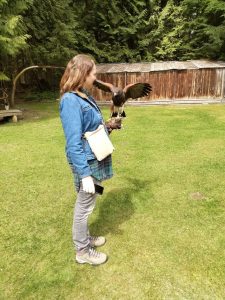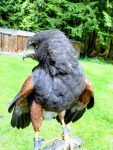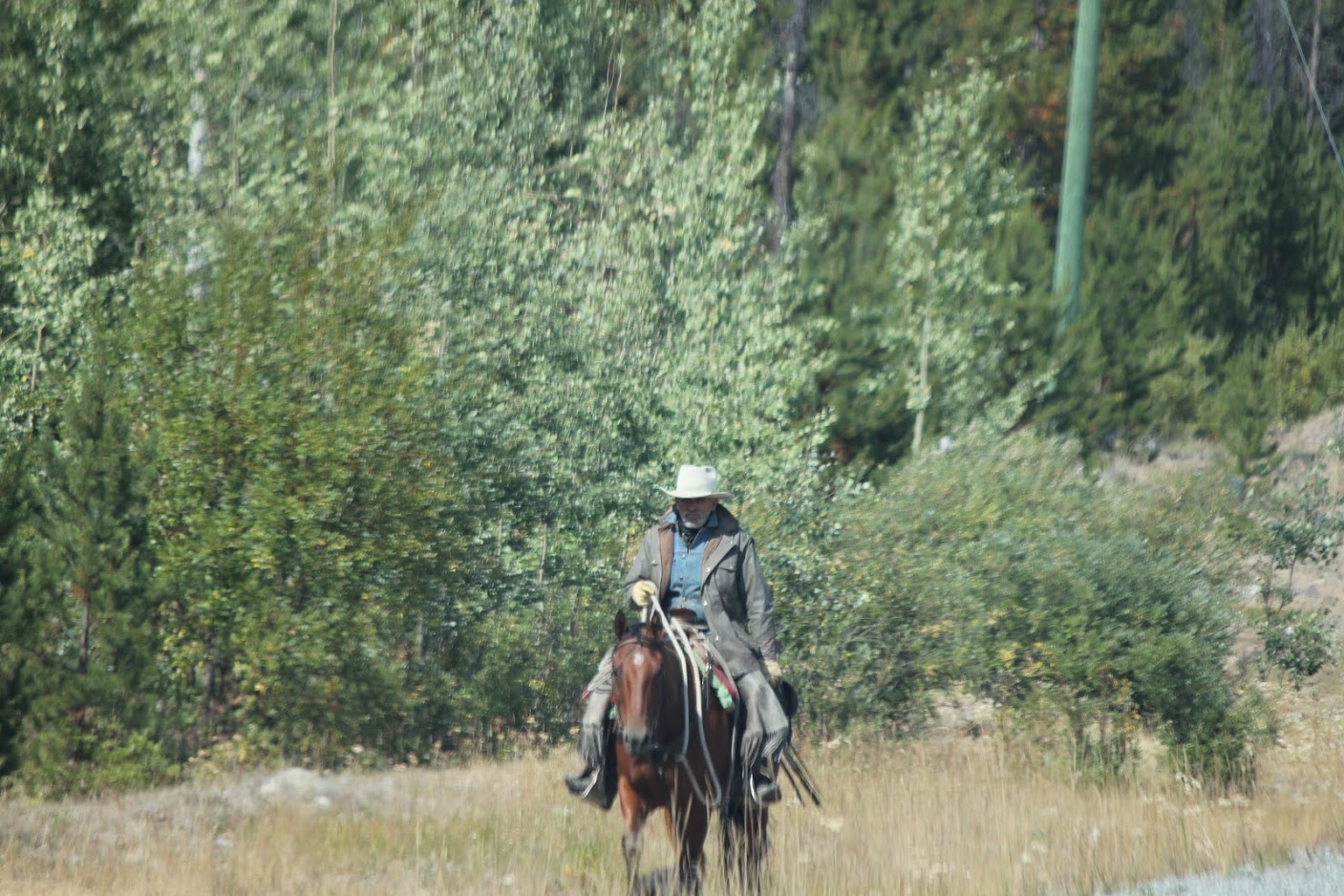For my birthday last year, my husband’s gift to me was a raptor walk–but we could not go during the cooler months, so scheduled it for April 20, yesterday. The owners of the raptors live in the country outside Maple Ridge, and their large yard consists of super-sized bird cages; beyond their home is a great rainforest. Raptor Ridge is a place for re-homing birds of prey that cannot live in the wild–birds that have broken wings, were raised in captivity whose owners could not keep them, and so forth. Some of the birds are not very social and cannot be trained–but are interesting and gorgeous nonetheless. We saw barn, barred, and snowy owls. I was hoping that there was such a thing as a “bard owl,” who sang a lot, but there is no such a bird.
The trained raptors are the Harris’s hawks, which are very social and intelligent. The birds are not native to this area, though, according to one of the guides, were migrating northward due to loss of habitat–perhaps climate change too–in their more southern habitats, from the southern US to South America. The hawk often hunts in packs, though at the reserve in captivity, the hawks do not like each other, or the other birds there, and do not hunt at all, neither together or solo. The guide explained that you can have packs as large as a couple dozen, but most packs are closer to about half that. The birds work together to hunt down prey, tiring out their prey, before attacking. The “alpha” eater is a female. These hawks can also be trained to keep pigeon populations under control.
Anyway, I didn’t really want to leave the place. The sanctuary of the rainforest and sunshine made me feel real, as always. We’re experiencing spring-like weather, finally, after what seems like a winter and early spring of rain. The cherry trees blossomed a few weeks ago, and my sapling Ojochin now has full leaves. Flowers are blooming, yards are full of dandelions and dug-up sections where crows and raccoons have been digging for chafer beetles. Temperatures are going up, and will be summer-like this coming week! So, hanging out with hawks on a nice day was pretty exciting.

We got to carry hawks on our hands. The way it works is that you wear a thick, leather glove, and the hawks are transferred to your gloved left hand–your arm steady like a tree branch. During the rainforest walk, the hawks are leashed to the glove. And we had to stand at least five feet apart, because otherwise the hawks would want to fight. I held Victor, the youngest (7 years) and largest, while my husband held Storm, who I think was 13 years old. Each hawk had its own personality. Victor liked to raise his wings often; the guide said that he liked to show his underarms. Storm was older and thus the alpha among them. Both purred like cats, and preened themselves while on our arms–signs they liked and trusted us. After the birds began to get used to us, we went out to the forest beyond the big yard. We had to walk under one of the main perches to get to the forest, and Victor was super anxious about that. He kept trying to fly, and we had to stop twice to rehook him properly to the glove. During the walk, he seemed content. The main thing is to keep your arm very steady, like a branch. In the forest, we encountered ferns, mushrooms, fiddleheads, and rainforest trees.
Back in the yard, one of the guides put Victor back in his cage temporarily, while my husband got to learn how to get Storm to fly to a perch and come back. The yard had two big perches and one smaller one. Of course, the bird is now no longer attached to the glove. You stand facing toward the perch to get the bird to fly to it, and turn around and have your back facing away from the perch (and have some raw chicken) for the bird to come back. Storm, the oldest, had honed this down to a fine art, and was much faster at flying to and fro. When it was my turn with Victor (see photo above), he was a little more hesitant to go to the perches, but finally became an old pro.
I enjoyed myself so much! Sometimes I think if I could go back in time, I might study animals instead of literature–but the fortunate fact is that these reserves exist today, and anyone, despite their background, can learn something about falconry.







